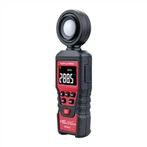Why is an inverted microscope an "inverted" microscope?
The composition of the inverted microscope is the same as that of the ordinary microscope, except that the objective lens and the illumination system are reversed, and the object is located in front of the objective lens, and the distance away from the objective lens is greater than the focal length of the objective lens, but less than twice the focal length of the objective lens. After the objective lens to form an inverted magnified solid image. What our eyes see through the eyepiece is not the object itself, but the image of the object that has been magnified once by the objective lens.
Because the material observed by inverted microscope is generally cultured cells, transparency, structural contrast is not obvious, so the inverted microscope is often equipped with phase contrast objective lens, which actually constitutes the inverted phase contrast microscope.
On inverted microscopes, different types of consumables such as petri dishes and multi-well plates are often used, with varying thicknesses at the bottom, which can cause some changes in light penetration. At this time, it is necessary to use the objective lens with a correction ring function, which is equipped with a ring in the middle of the adjusting ring, when turning the adjusting ring, you can adjust the distance between the lens group within the objective lens, thus correcting the aberration caused by the coverslip (Petri dish) thickness is not standardized (conventional Petri dish is 1.2mm, coverslip is 0.17mm). The correct way to use it is as follows: adjust the calibration ring to the standard value of 1.2mm and focus on the sample. Correction ring to the right half a frame, and then focus on the sample, if the image effect becomes better, then adjust the right again and focus, and vice versa to the left.
Inverted Biomicroscope Enables Dual Channel FunctionalityThe addition of 1 infinity light path to the product allows you to introduce additional light sources to enable techniques such as FRAP, photoactivation, laser ablation, laser tweezers, or optogenetics.
The inverted microscope was born to accommodate microscopic observation of tissue culture, cell in vitro culture, plankton, environmental protection, food inspection, etc. in biology and medicine. Due to the special limitations of these samples, the objects to be examined are placed in Petri dishes (or culture flasks), which requires that the objective lens and spotting scope of the inverted microscope have a very long working distance, so that microscopic observation and research can be carried out directly on the objects to be examined in the Petri dishes. Therefore, the position of the objective lens, spotting scope and light source are reversed, from which the name "inverted" is derived.






